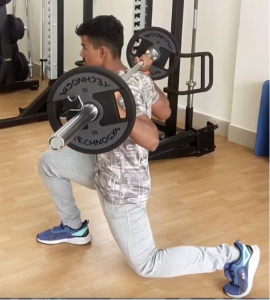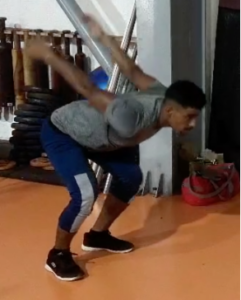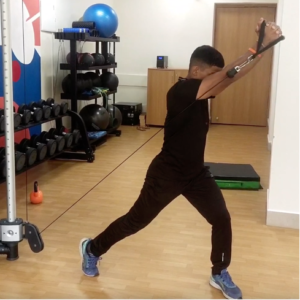A very important thing to remember at all times with your strength training as a batter, bowler or all-rounder, is to not lose sight of the context of your strength training in terms of its place in your overall program (along with running, club training and match days.) Many young players when they first get into a form of strength training lose sight of this, and become far too preoccupied with the weights training as an end in itself. This often usually leads them down the path of performing too many bodybuilding-style routines – and we have covered the deep floors in bodybuilding style training for cricketers elsewhere. But this point about keeping the strength training in context raises a couple more important points, which I would like to briefly cover here.
Its not really about the weight on the bar
Don’t get me wrong, generally speaking, if you improve with how much weight you are lifting in certain movements, you are clearly stronger than before in terms of that particular strength movement. However, this does not guarantee that this increase in strength in the weights room will transfer to situations you will face or preform in a match, which we will expand on in a second. But to help illustrate a couple key reasons why this is the case, I will use a quote from Paul Gamble in Strength and Conditioning for Team Sports:
‘Fundamentally, a players strength capabilities when lifting in the weights room is of less relevance than their ability to express that strength when executing athletic and skilled movements in the field of play.’
Strength isn’t really the end goal for a match
This may sound strange, because after all aren’t we strength training to get stronger? Well yes, but not just stronger for strongers sake. As the quote from Paul Gamble above outlines, it is the expression of this strength through athletic and skilled movements that we are really after. Things like swinging a bat, accelerating, landing (on one leg fast bowling), decelerating, changing directions running between wickets and the various components of bowling action itself are the types of physical movement qualities that we really want to improve via a sound baseline of strength training.
In other words, strength training provides the platform on which to build and improve other key athletic qualities for cricket like various expressions of power, agility and speed. Strength is the underlying ability on which all other movement qualities (agility, speed, power and even endurance) are built on top of. Without improvements in strength, there can be no genuine improvement in these qualities. Therefore, strength is vitally important, however the ability to express this strength and transfer it to a match is far more important than the actual weight on the bar you are lifting.
Don’t forget the importance of specificity
The principle of specificity with training basically states that to maximise the transfer between training and the performance of a task, the training must have qualities as similar as possible to the event itself. This is why interval training is a far better form of training for a game of cricket as a batter than doing longer slower distance runs, because the heart rate variability and variations in intensity of muscle action are closer to the demands for a batter. This is also a reason why a leg press will not be the best choice if you are aiming to develop lower body strength and then power for batting or bowling for example, whilst lunges and plyometrics are a much better option. These are a couple examples to make this point, and indeed the discussion of specificity for cricket itself is a topic that can fill a whole book itself, but this is an important point to touch on in this discussion, as it relates here.



Specificity of movement in terms of strength training doesn’t just relate to movement biomechanics (like how a squat is very similar in movement to a double leg jump, or how a step up is very similar in movement to a single leg jump), but also to the speed and quality of movement. Using the squat example again; a squat is a very similar movement to a double-legged vertical jump, however, a heavy squat isn’t at all similar in term of the speed of movement of a vertical jump. A vertical jump is an explosive movement requiring a very fast recruitment and firing of these muscle fibers. As such the specificity of the heavy squat isn’t as high as a lighter squat executed at a higher speed, or a plyometric squat jump. Similarly, a rotation movement like a cable woodchop is a good example of a great rotation-targeting strength exercise with carryover to a batting movement. However continuously increasing the weight being lifted is not as effective from a transfer point of view. Rather, after laying a base foundation of rotational strength – the focus becomes moving at speed, and combining with other rotation-based power movements such as medicine ball rotation throws.

That is not to say that heavier lifts aren’t functional for cricket. They are, and they provide the platform for better movement qualities, because like we said, all movements are built on top of strength. However, it is important to then get more specific with the movements and movement qualities by building on these strength movements with more speed and power-focused movements with a higher level of specific carryover to a game of cricket. And this takes us back to the main point of the article; whilst increasing your strength in the weights room is important and will provide the potential to improve in other athletic qualities, don’t lose sight of the main goal being the development of movement quality, rather than the continual increase of the weight on the bar. Furthermore, it is believed that beyond a certain point (albeit a fairly advanced point), lifting heavier will not provide much added benefit to movement qualities in a game of cricket.

Cricket Athlete